

Our visit to the border of Le Marche and Umbria had first included Castello di Frontone and Telecabine Caprile (the ski lift). After leaving Caprile, we drove on a newly repaired mountain narrow road. There was a little pull-off so we stopped for the view.
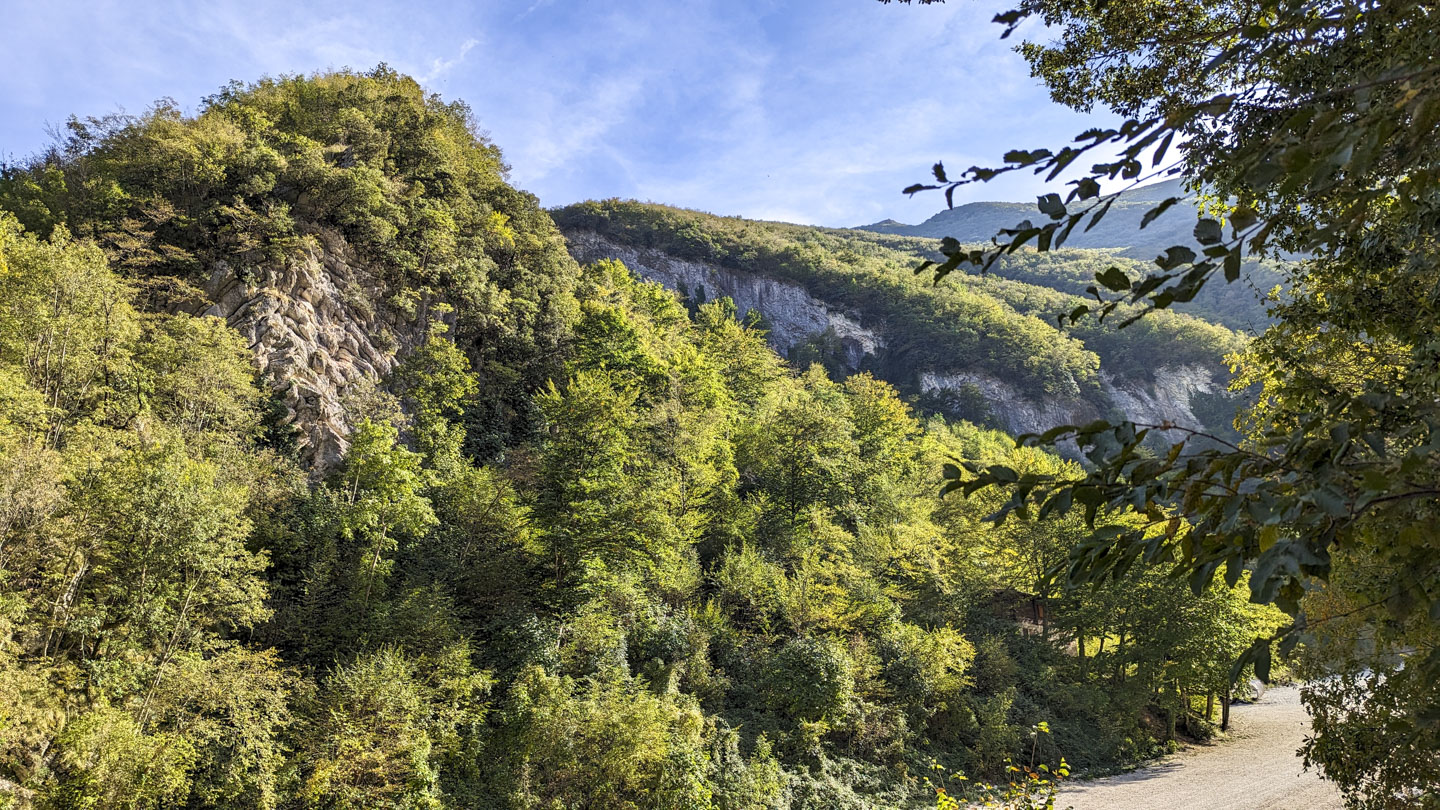
The pull-off also gave us a great view of the interesting power distribution network used in this remote area. They still have glass insulators. Glass is actually an excellent insulator against electricity but is more difficult to work with than some newer options.

There was a sign there showing various area hikes, and one left directly from where we were (Forked Pass, probably because it is at a fork in the road). We didn't have time for a proper hike but we went up the start of Direct Trail to Mount Catria. This section was rather steep and went through a little woods with small wild flowers.
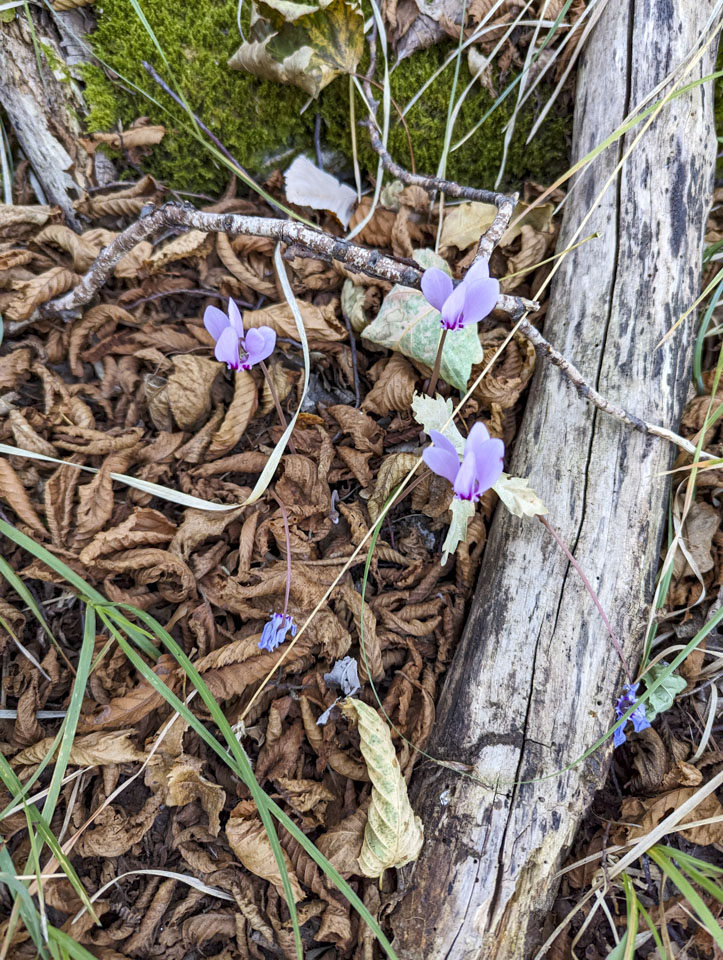
We went as far as a little meadow that provided a pretty view.
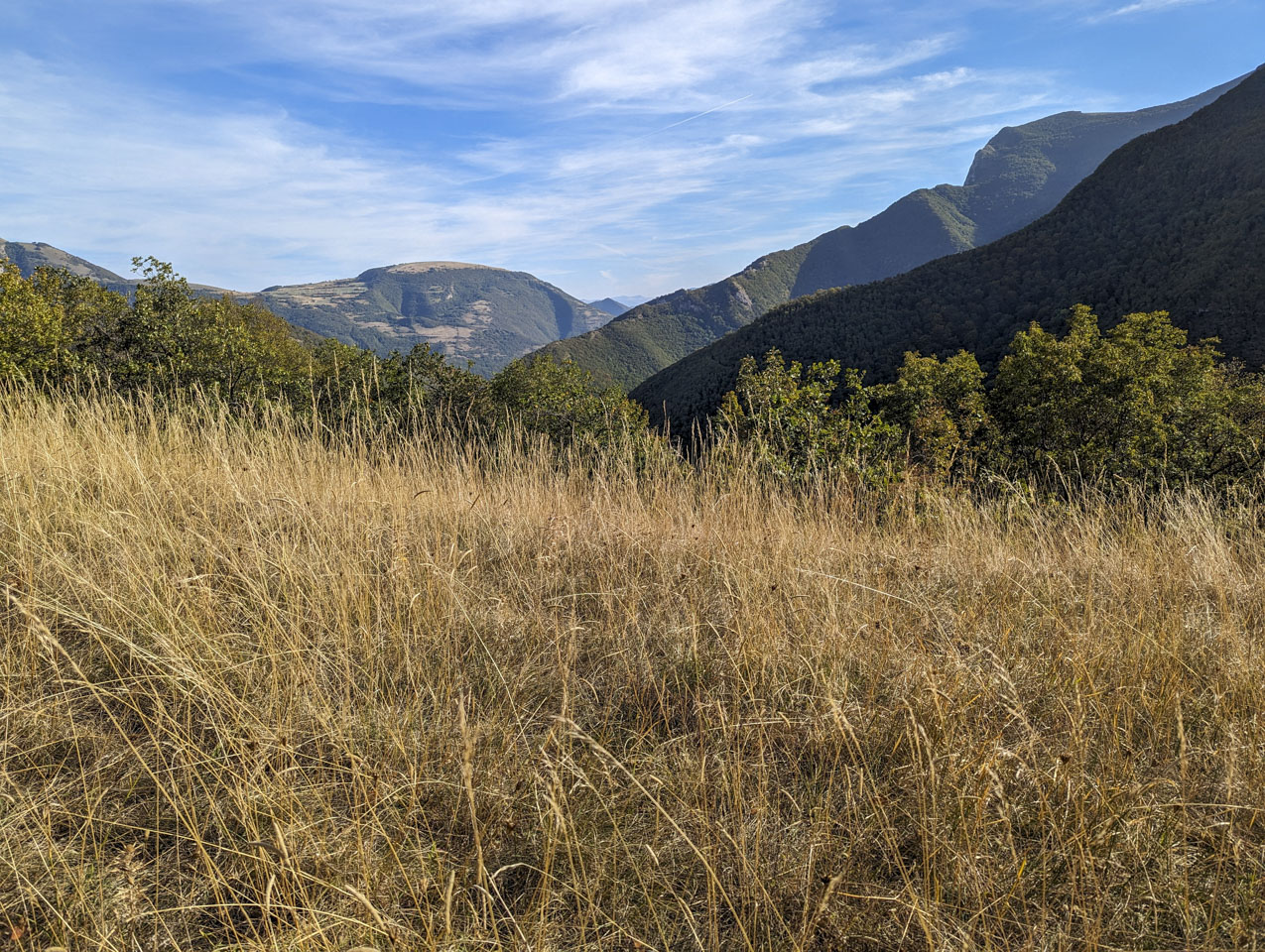
The peak in this next picture is Mount Strega (which is in Marche but we are looking through Umbria to see it). It is only 3 miles as the crow flies, much longer as the car drives (13 miles).
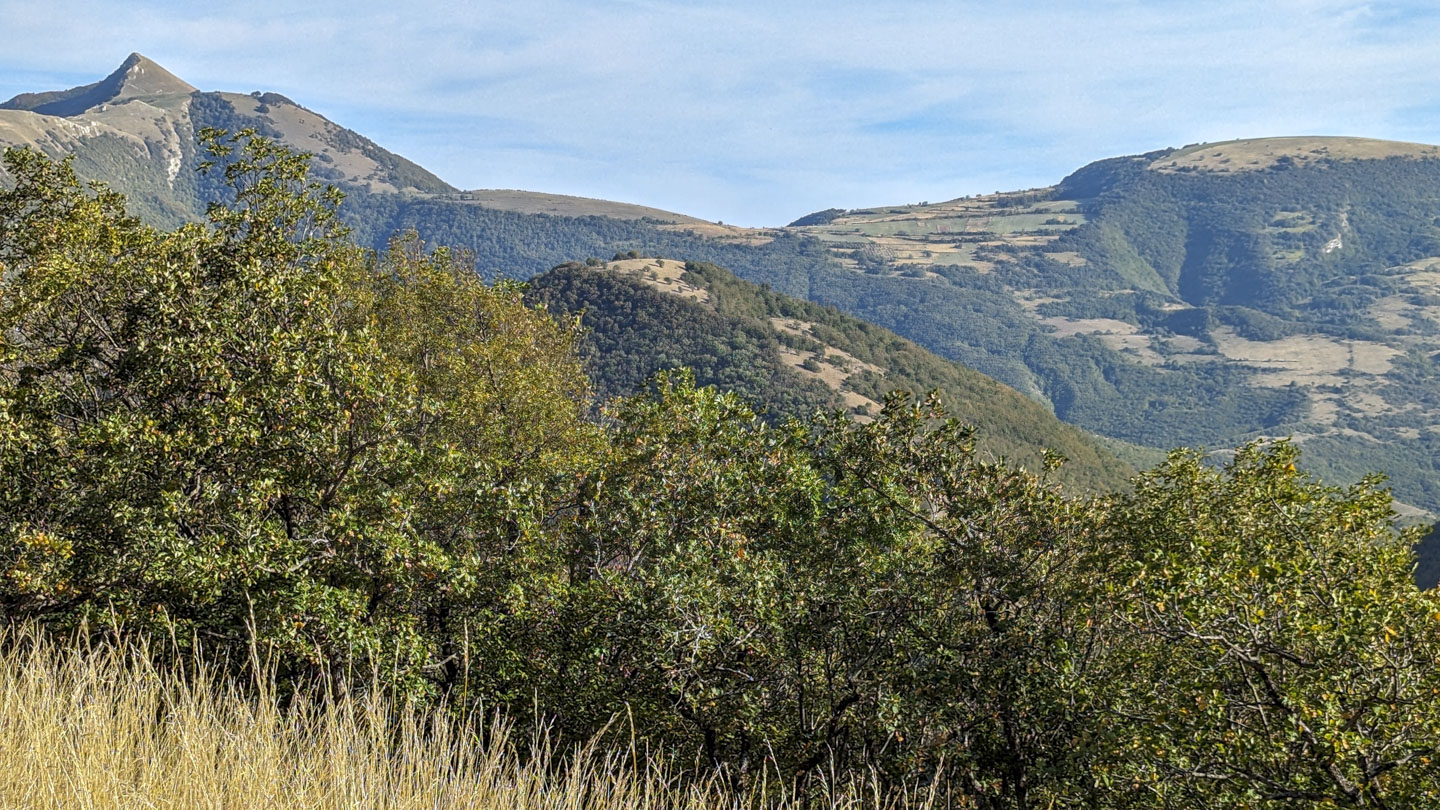
Paul took a video from the meadow, which will give you a better feel for the view.
After our little excursion, we continued down the road to our original destination: Monastero della Santa Croce di Fonte Avellana. (The linked site is in Italian only.)
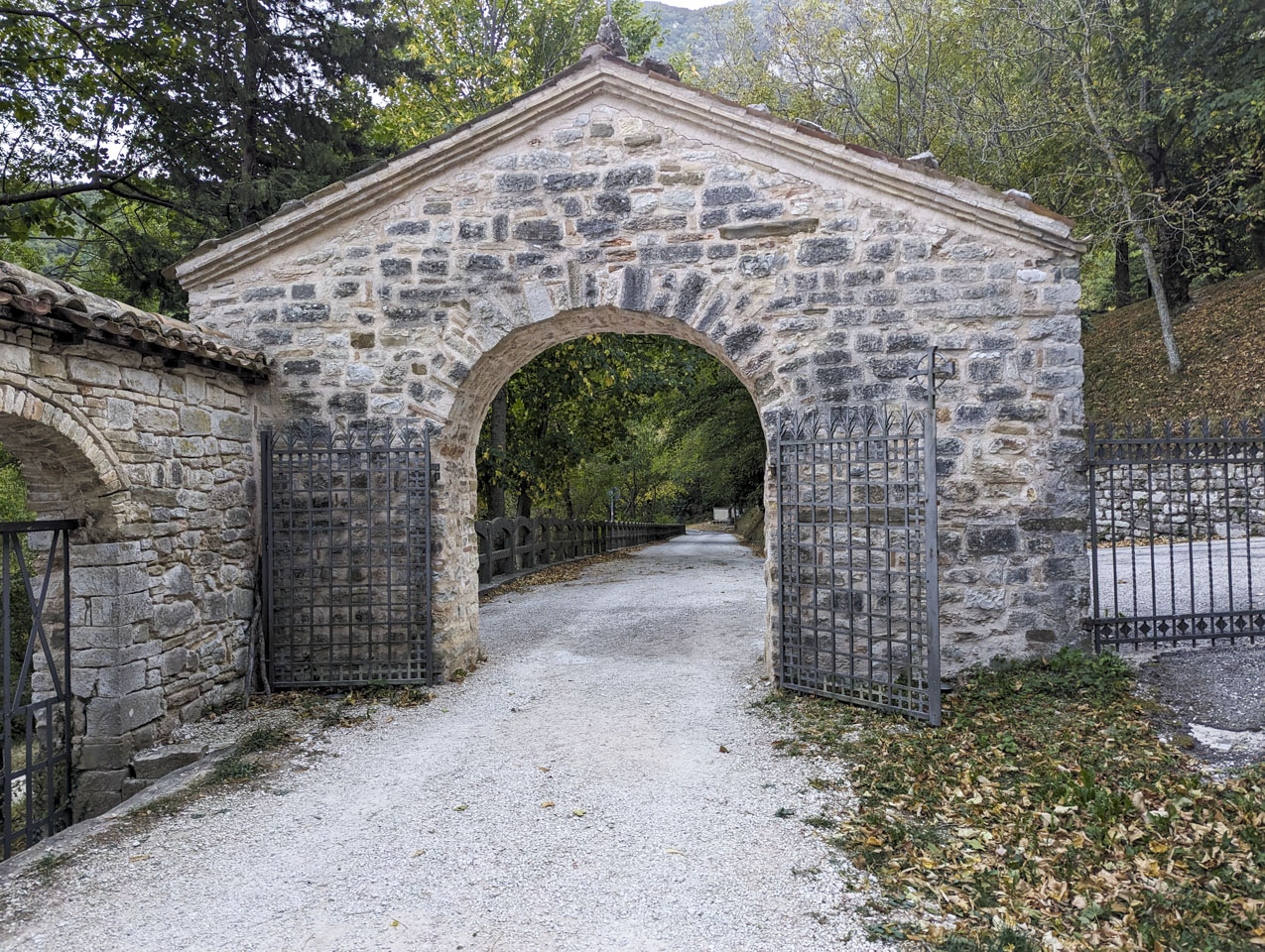
The monastery was originally founded around 980. Fortunately their facilities have been updated since then, and we were able to use the bathroom that was next to the parking area.
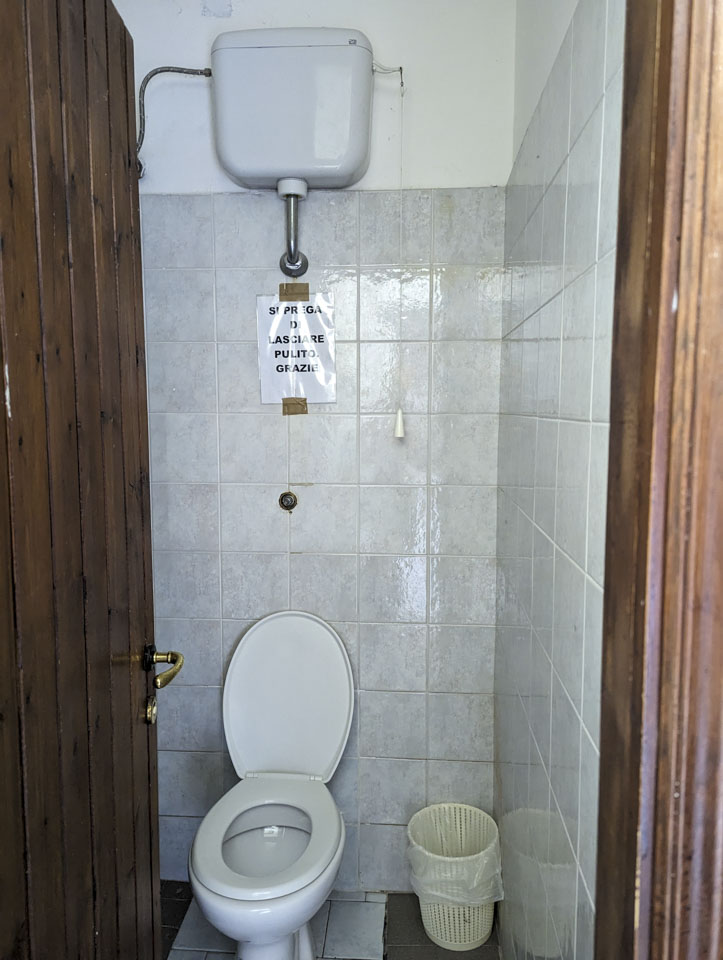
They clearly get many visitors at times. In addition to having many bathroom stalls, they also have a full-service bar. They have many types of digestivo liquors (which we found out later are actually made at a different monastery that is in Tuscany), and many herbs. Anne had some ginger tea, which was good but strong. Paul got a decaf espresso. Anne was also able to get some rhubarb tea. She loves rhubarb, but she is not convinced about rhubarb tea yet.
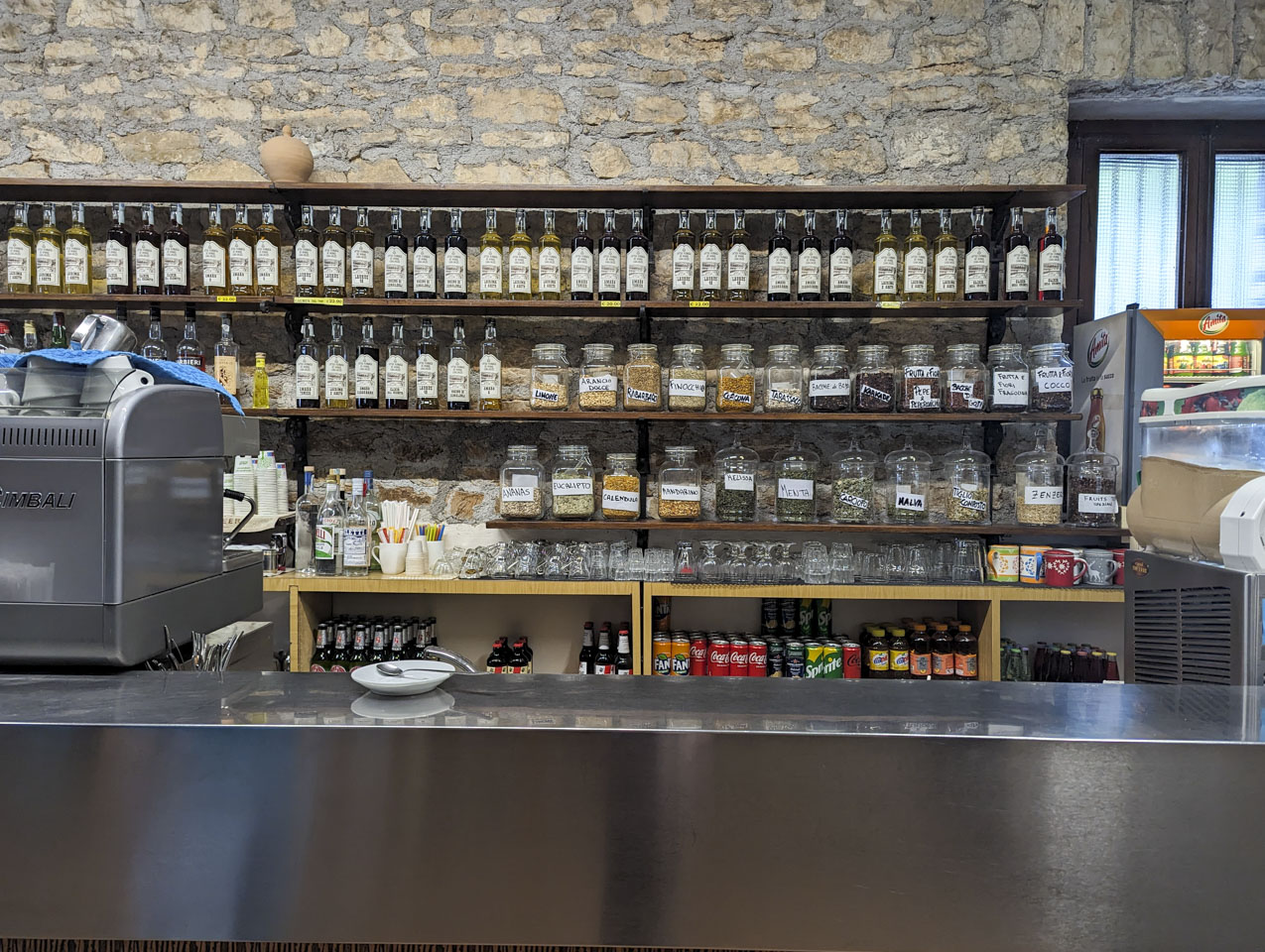
While we waited for a tour of the building, we wandered around the grounds. The monastery is nestled in the pass and has impressive mountain views.
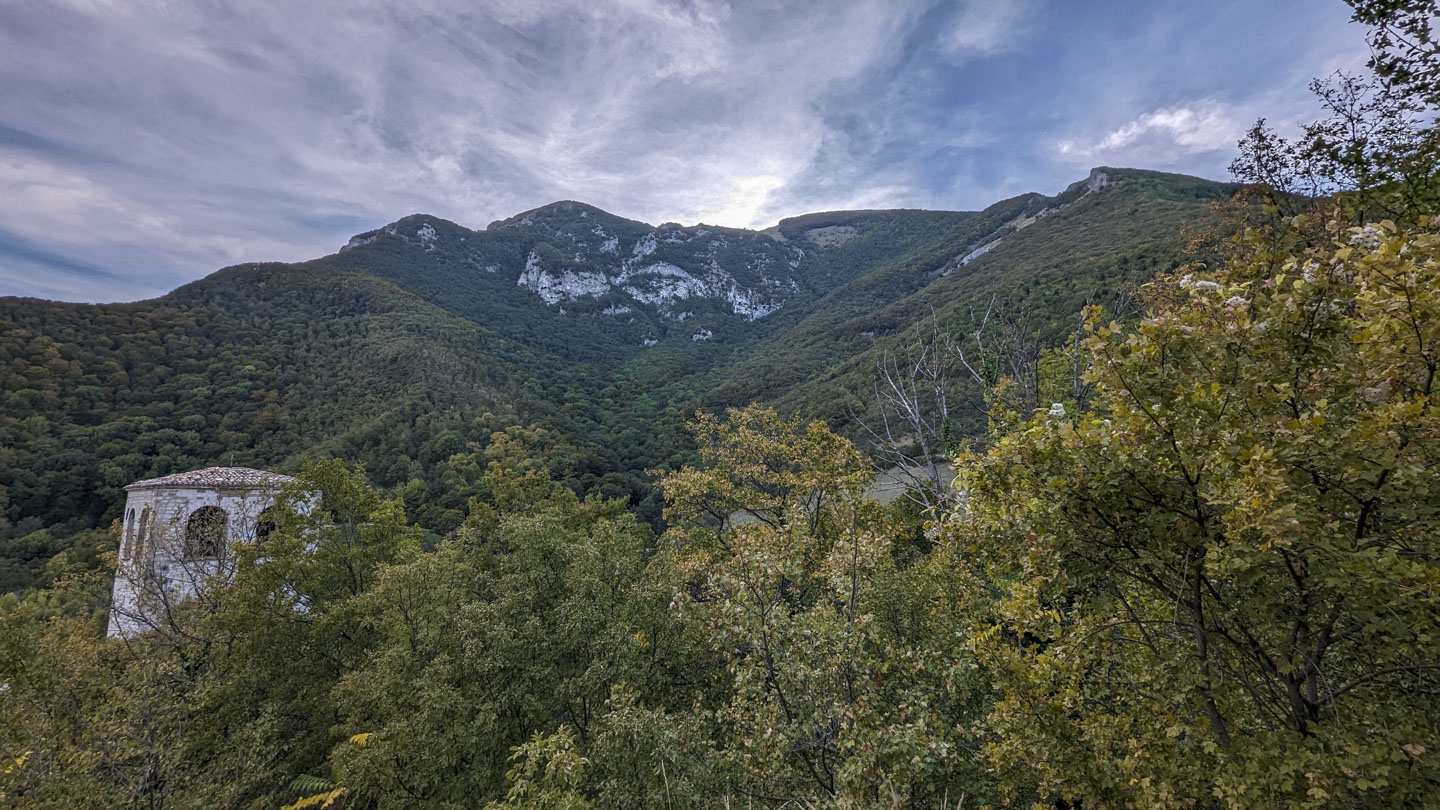
Anne found the back of a building fascinating because of this stairway with an extremely large final step.
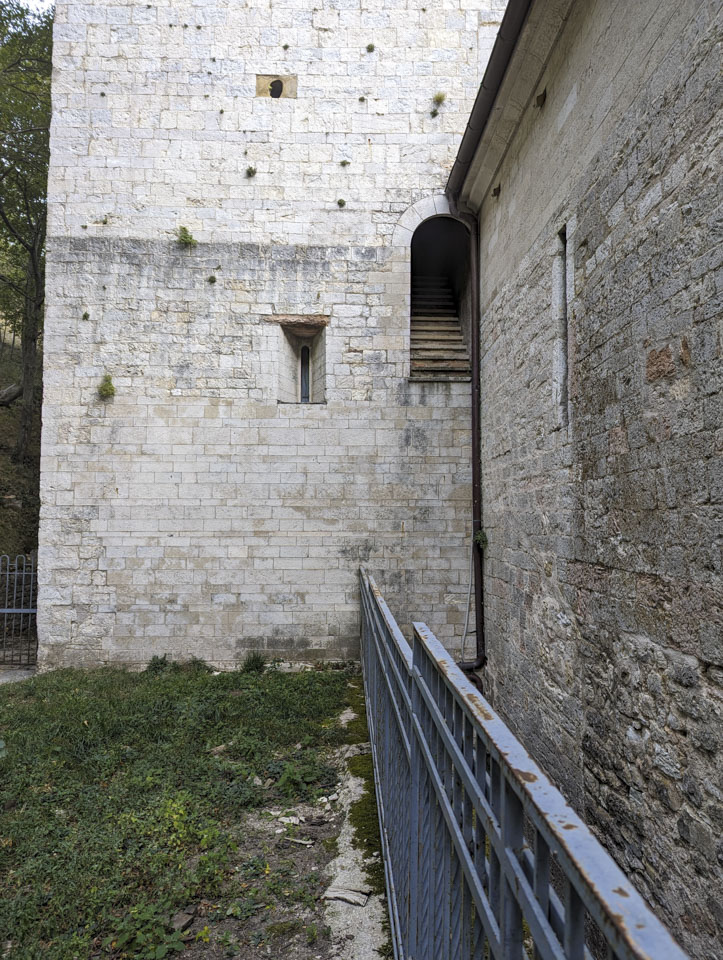
Presumably there was once a ladder or external portion to that stairway. The stonework is substantial.
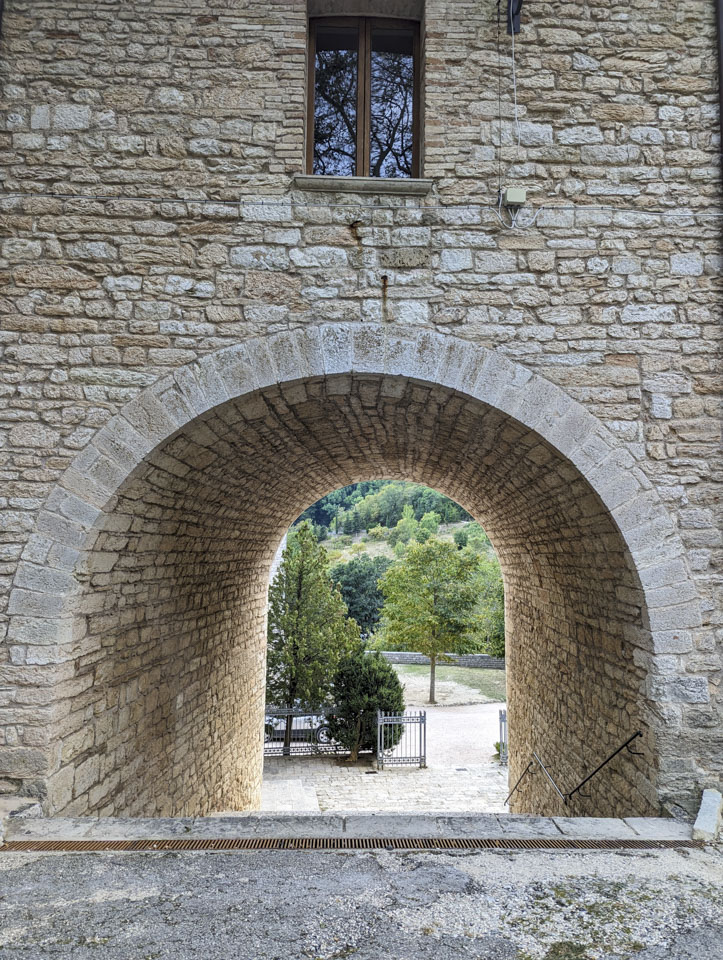
Going through that archway brought us back to the area where the tour was going to start. There is a 3-D plaque of someone, possibly of either San Pier Damiano (founder) or San Giovanni da Lodi (who succeeded San Pier).
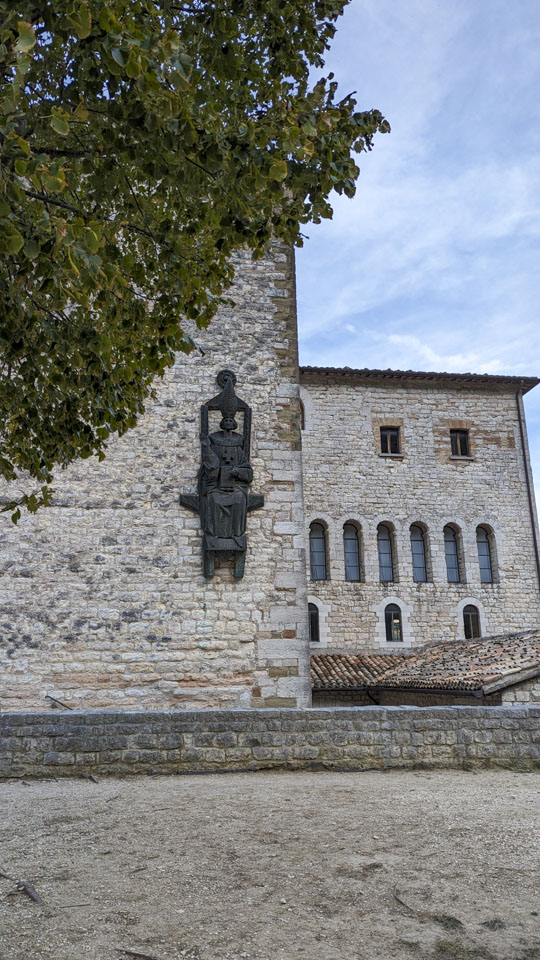
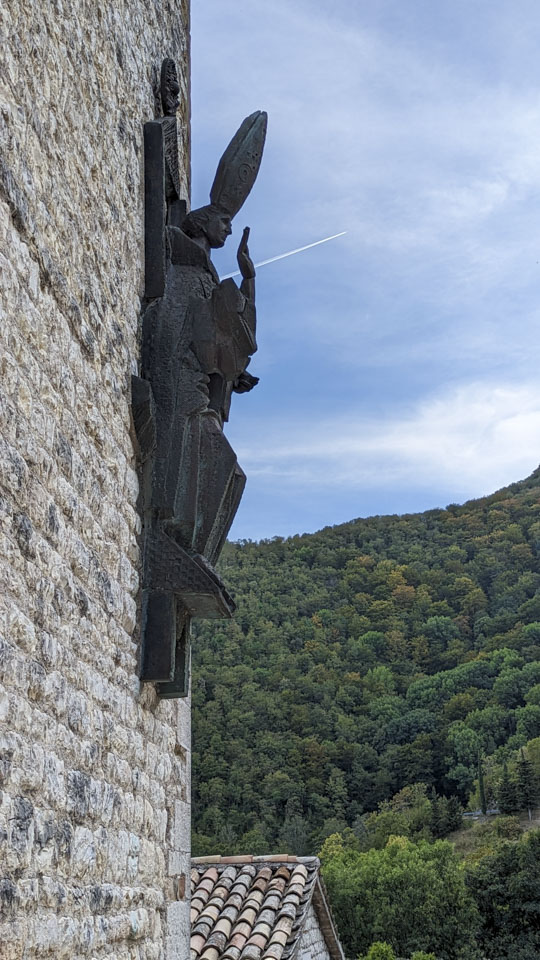
There were no other visitors on our tour. This was probably good, because our guide only spoke Italian and we had to ask him to repeat himself a few times. The monastery is famous for the Scriptorium, which Anne had read about while we were still back in the States. Monks labored here, transcribing and preserving ancient classical Greek and Latin texts and creating lovely illuminated manuscripts. The current Scriptorium was built in the 12th century. The angle of the building and windows were specifically designed to provide appropriate light for the monks. The long axis faces directly south. There is a window at that south end, positioned to act like a sundial. The sides of the room face east and west, so those windows capture every bit of sunlight possible. We were told that by the end of the day, the hard-working copyists were exhausted. Most of documents these monks created are now in the Papal library in Rome. The guide asked that we not take any pictures in the Scriptorium, but he let us take a picture of the modern library room (that still dates back to the 1700s).
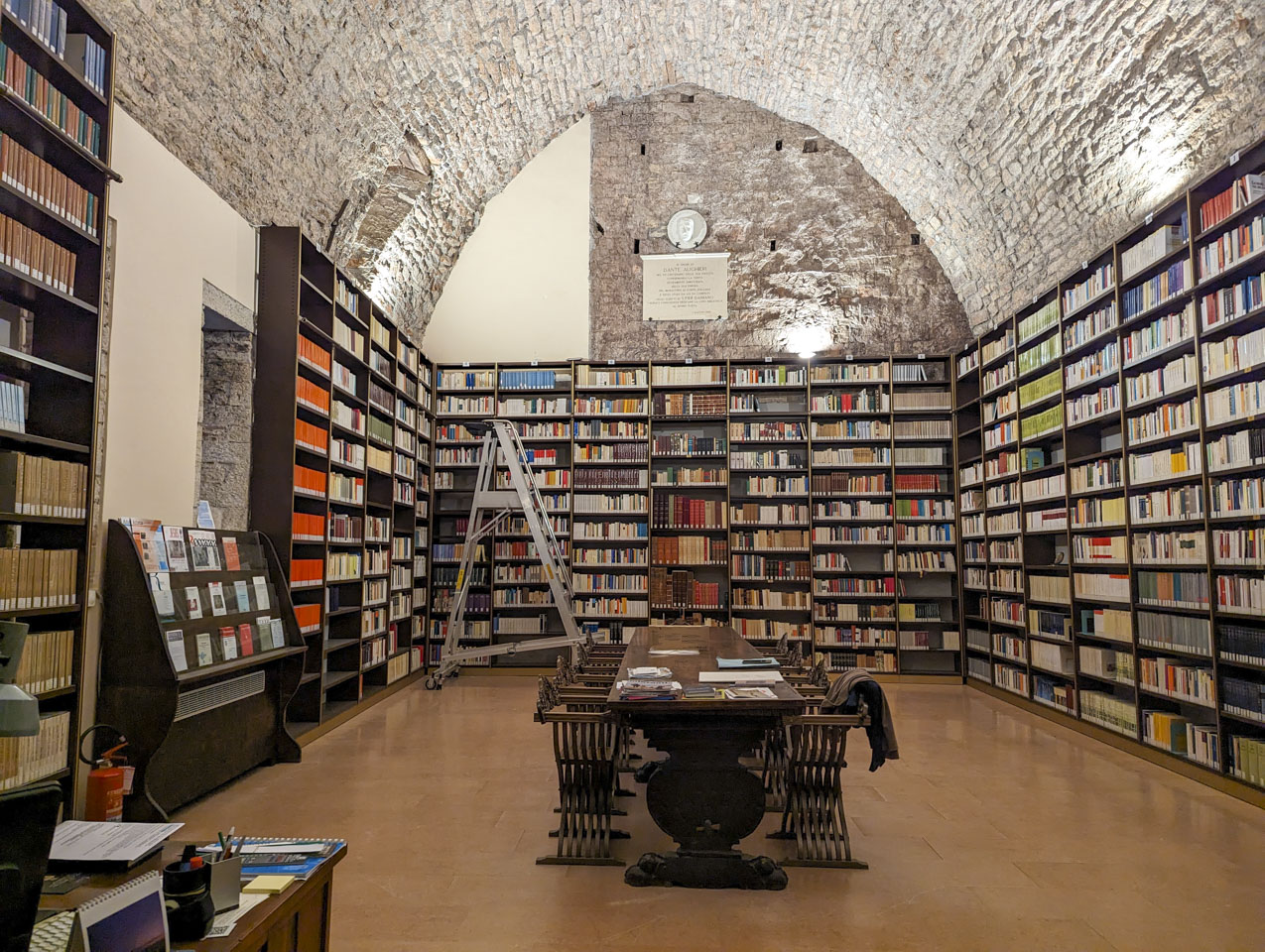
Another particularly impressive part of the monastery is the crypt. This is considered the oldest part of Fonte Avellana. It includes a primitive church that dates back to the founding of this location. It is mostly underground and stays at a consistent 60° year-round. The steps that are part of the window symbolize the ascent towards light.
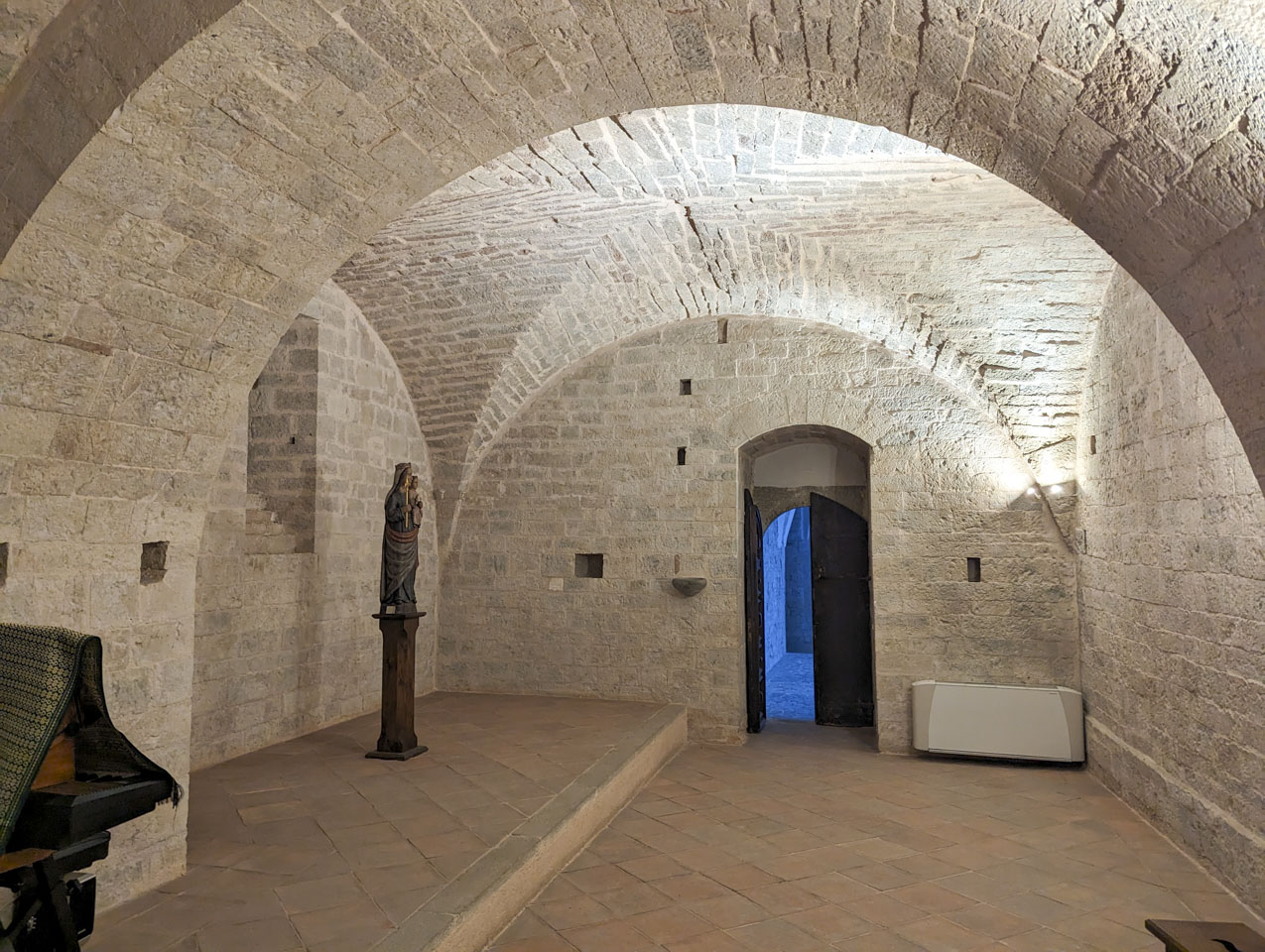
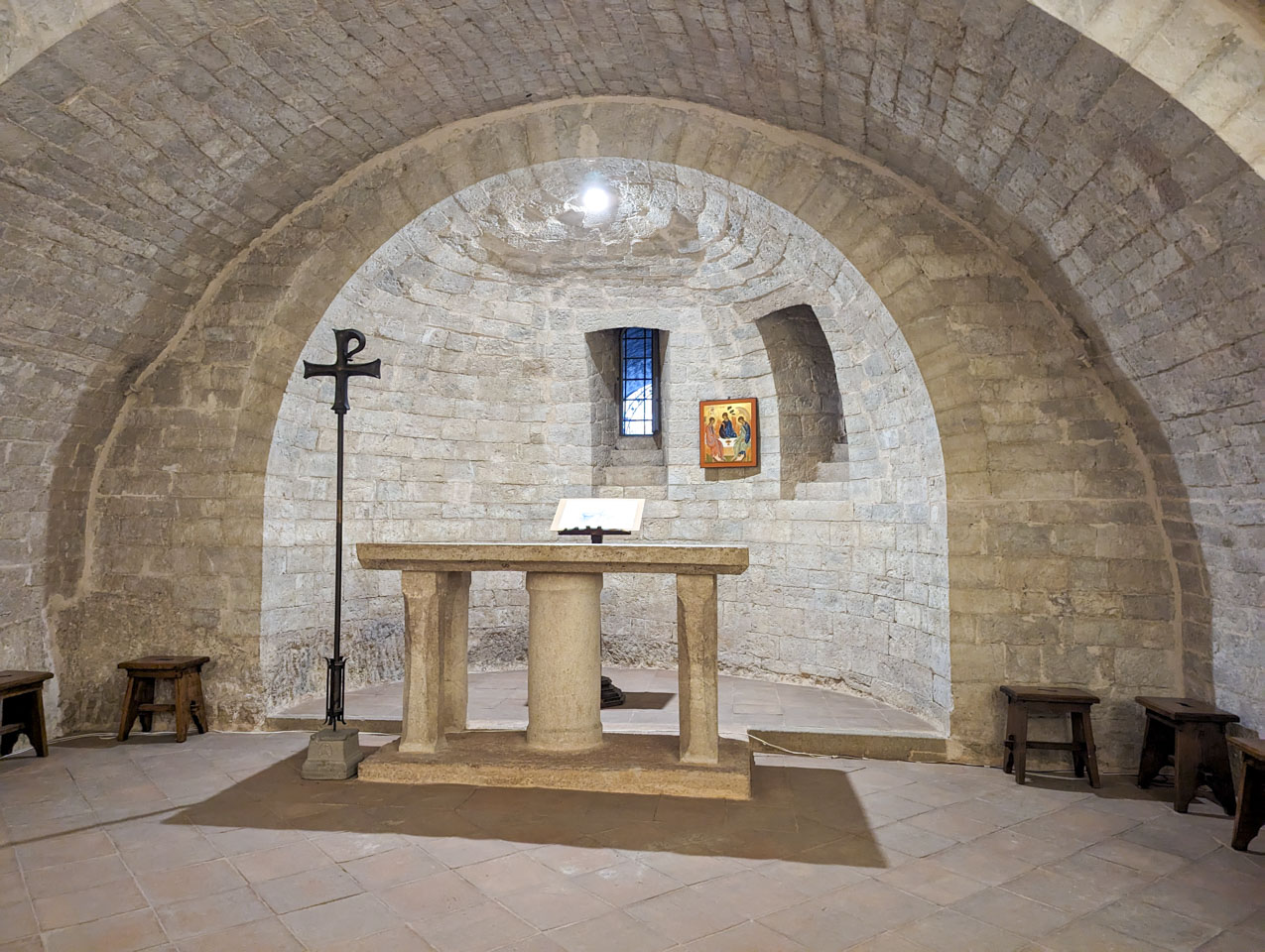
From the crypt, we ascended to the current church area. We went by a cheerful side room on our way.
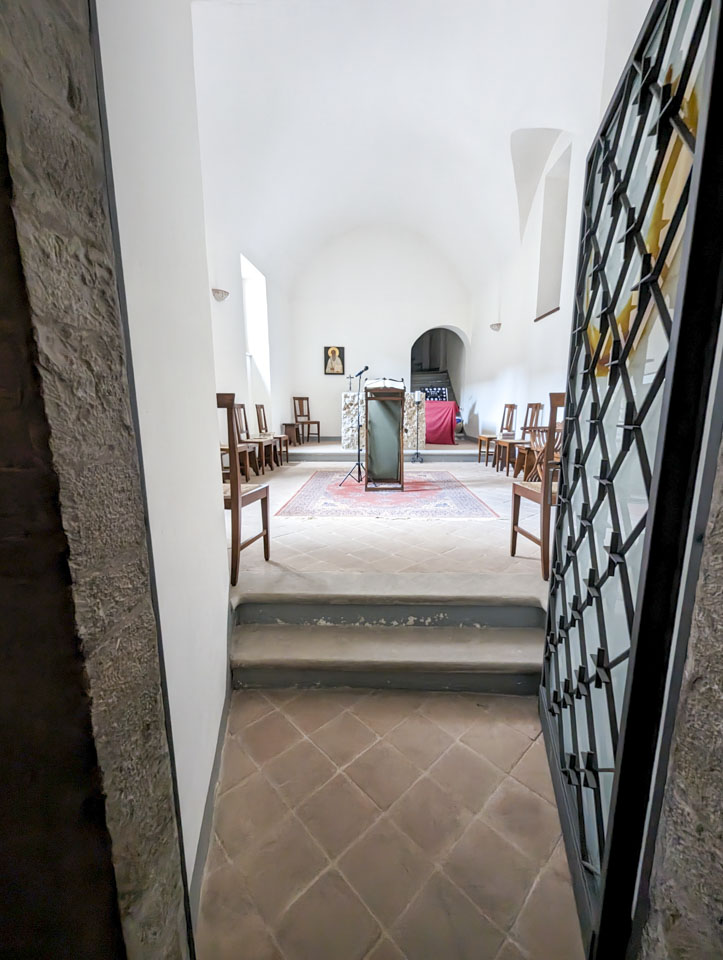
Then we came out into the 11th Century church. We came out at organ level.
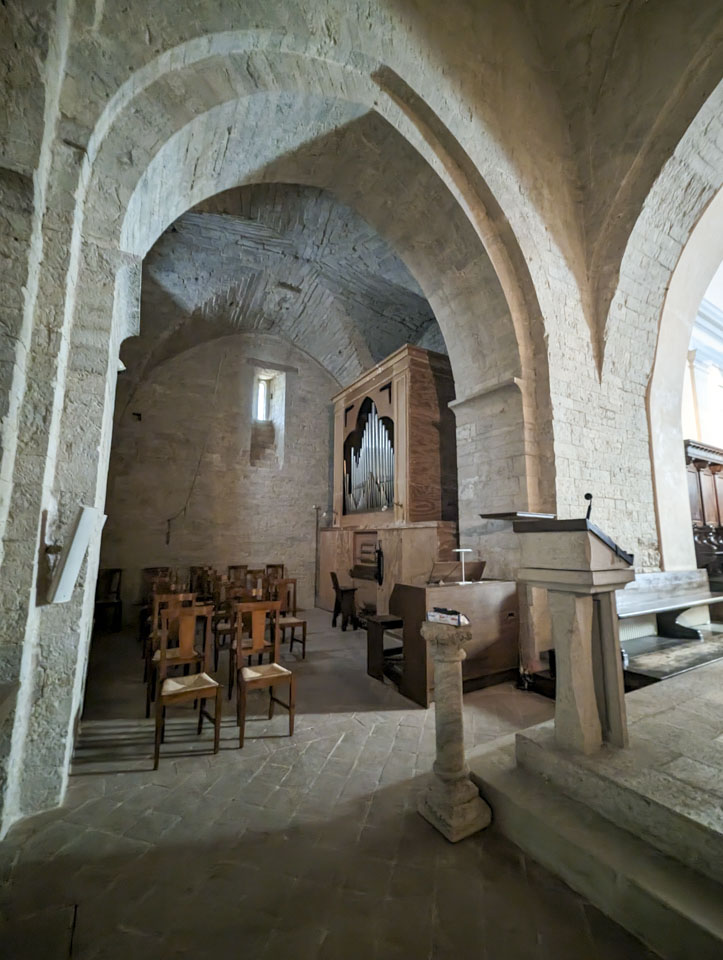
This room is rather dark, even during the day. This picture is taken looking towards the entrance.
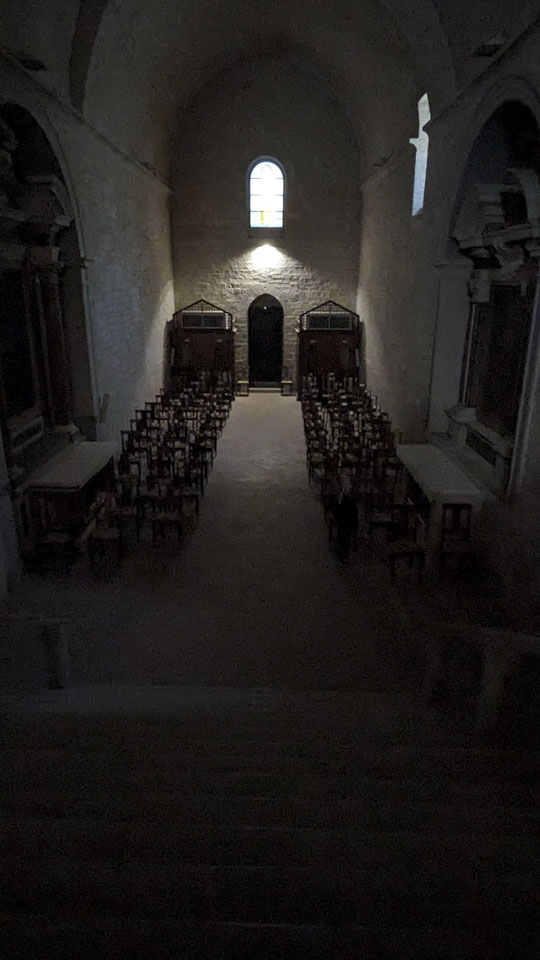
In the above picture, if you look carefully, you can see there is a spot for a painting on each side.
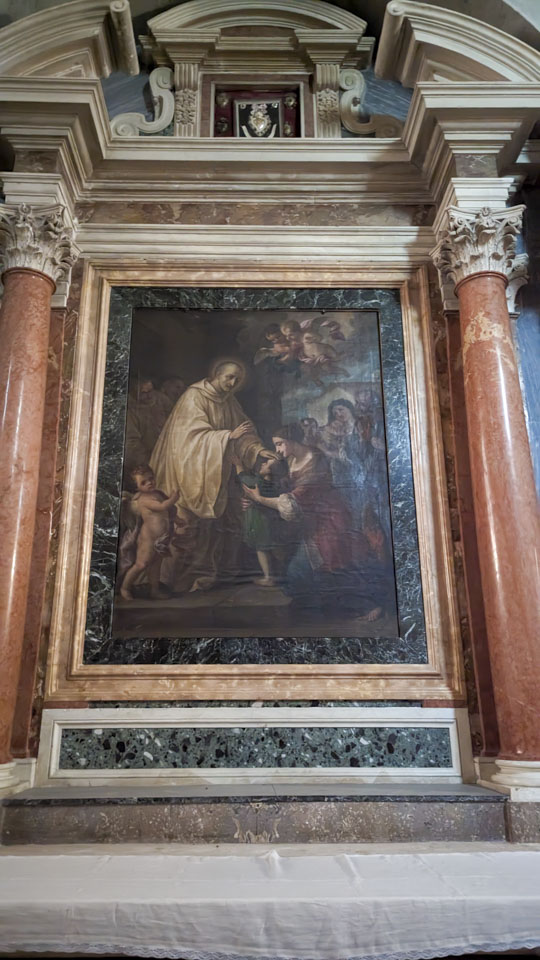
Here we are down in the seating looking back at the large cross.
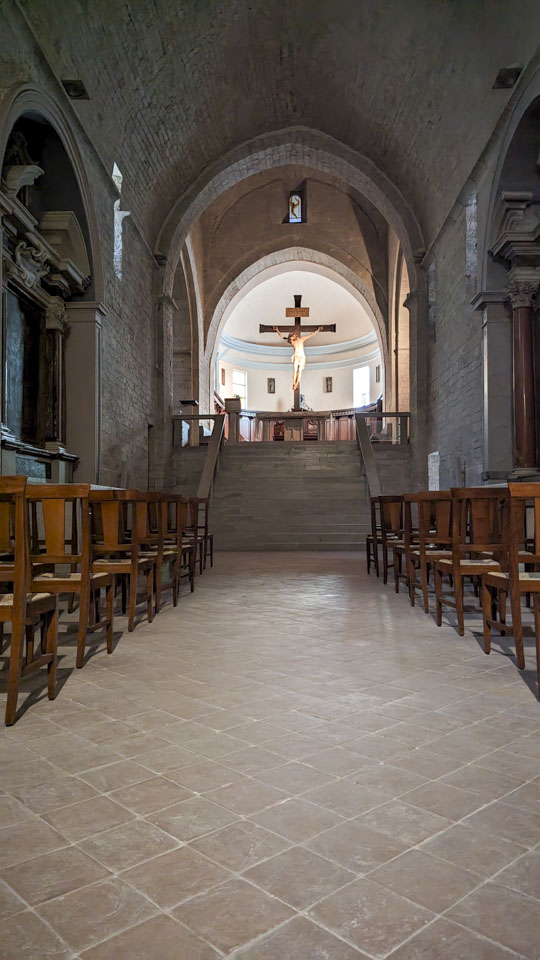
A final view from the area outside of the scriptorium.
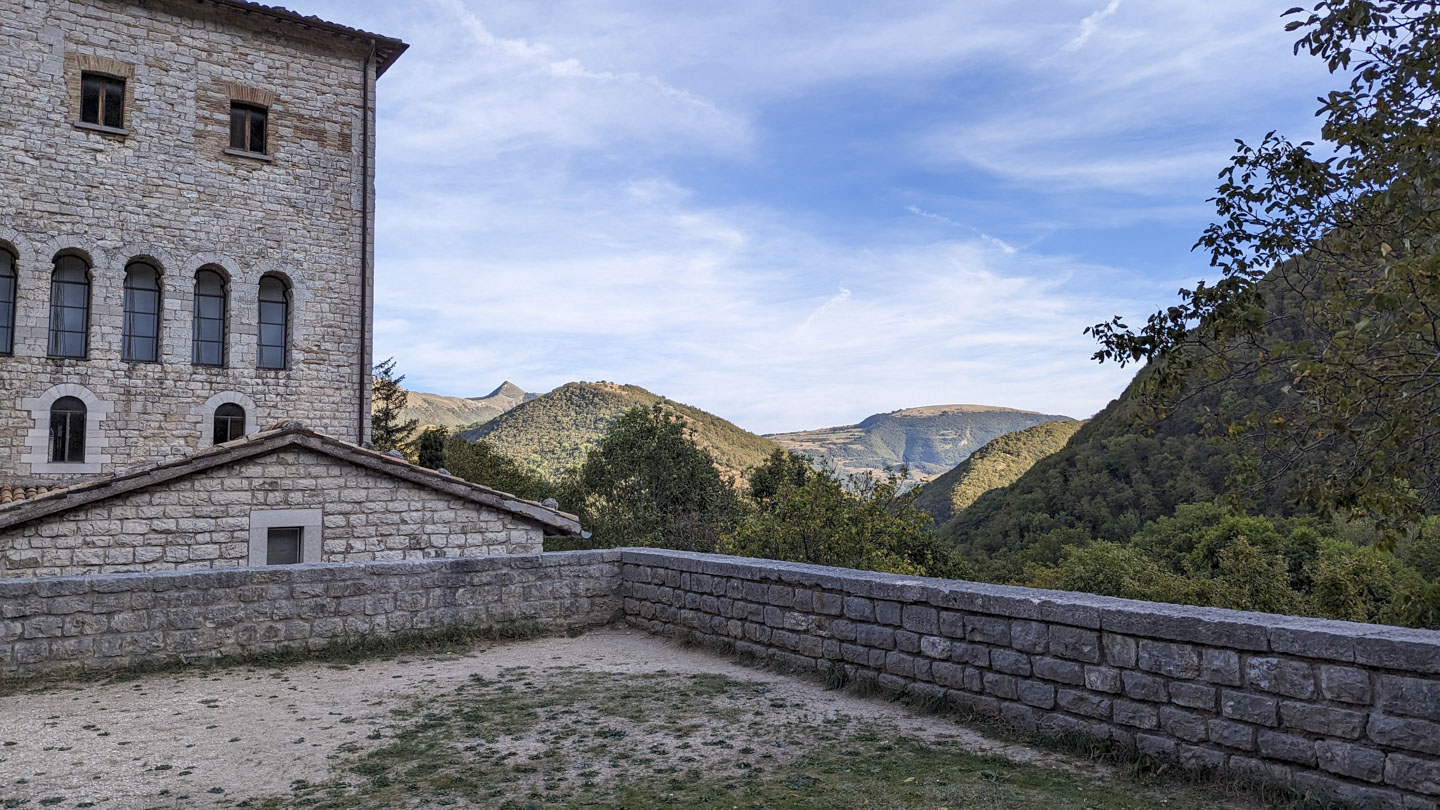
Updated January 2024